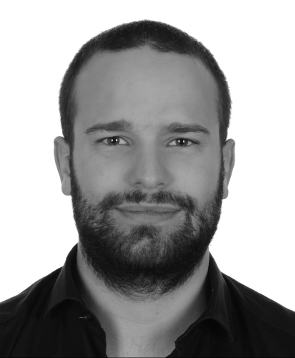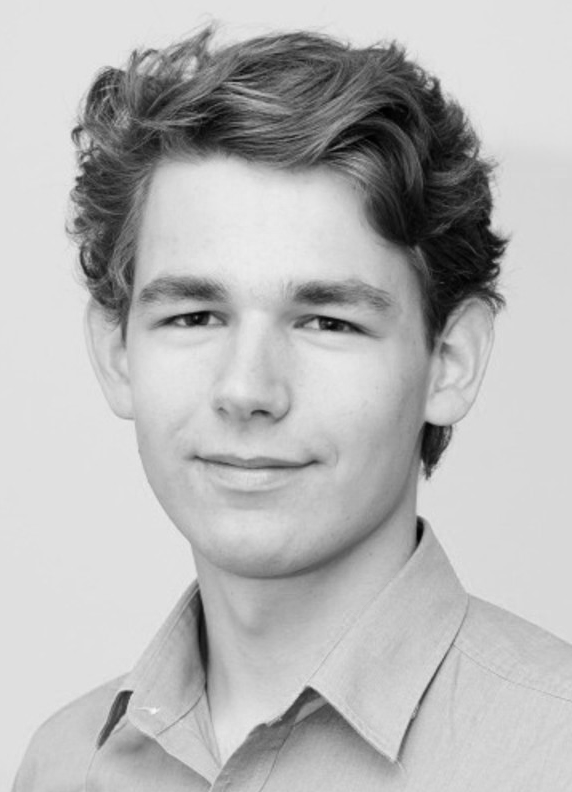The JAACS annually awards a prize for the best Bachelor, Master, and Doctoral thesis at the INF, IIUN and DIUF that was defended during the academic year. The winners are selected by the respective institutes and are presented the award at the institute’s end-of-year event.
Laudatio
Marti has worked in the general field of non-classical logics with a focus on intuitionistic epistemic logics. He has been able to solve some interesting problems in the context of intuitionistic common knowledge and intuitionistic distributed logic and to make some promising first steps into the new field of intuitionistic justification logics.
http://www.ltg.unibe.ch/staff/mmarti
Laudatio
The thesis tackles the cloudification of complex high performance simulation systems by addressing various aspects: (a) overview of high performance and cloud computing domains, (b) analysis of existing simulation problem types, (c) describing and analysing an example Monte Carlo simulator stemming from the hydrogeology domain, (d) presenting two cloudification methodologies, (e) applying the methodologies to the example simulator, and (f) evaluating the potential application of methodologies in a real case study. The thesis concentrates on devising solutions that facilitate the adaptation of scientific applications to ever emerging new technologies and methodologies. It was thus in particular necessary to understand the high performance computing challenges as well as the mathematical grounds of the solutions and the application domain usage.
Laudatio
Dr Leonardo Angelini has done his PhD in co-supervision between the University of Fribourg and the University of Applied Sciences in Fribourg. This PhD is the result of 10 years of collaboration between Prof. D. Lalanne and Prof. E. Mugelini.
Dr Leonardo Angelini is truly one of the best PhD students that we had between the two institutions. He succeeded to combine the best competencies of Human-IST and Human-Tech institutes. Not only he has developed, and evaluated with users, several systems combining gestural with tangible interaction, he has developed a conceptual framework to support their design, development and evaluation. During his PhD, Dr Angelini has published about 20 scientific articles and organized several international workshops which is remarkable at this stage of the career. We wish him a fruitful and long career in the academic field.
Laudatio
This thesis presents very original work which produced a performance comparable and also superior to current state of the art methods by the leading groups at the international level. More precisely, this competes with the best results from Google Deep Mind, from the FAIR group at Facebook, and from the research groups of the University of Berkeley and Carnegie Mellon University. An evolution of this work has been submitted to one of the 3 top tier conferences in computer vision and machine learning.
Laudatio
The Master thesis of Michele Alberti is an outstanding contribution to deep neural networks for image analysis. Michele has extended a given framework with novel initialization algorithms and has made extensive experiments. He has obtained interesting results allowing him to question approaches usually used by deep learning practitioners. Finally, he came up with novel ideas, enabling new learning strategies with less data, while simultaneously providing higher recognition accuracy. The work has given raise to several publications.
Laudatio
Recently, machine learning has been popular in computer vision studies. This works applies advanced machine learning techniques in wireless networks and illustrates how it can be used to enhance the performance of indoor positioning.
Laudatio
In his BSc-thesis, Simon Studer developed a lean messaging protocol with end-to-end encryption, aiming at being an improvement over, for instance, WhatsApp that at the start of the thesis did not use end-to-end encryption. The protocol that Simon designed is very clever and takes security as well as efficiency aspects into account. Simon worked extremely independently, reducing the supervision effort to regular meetings with interesting discussions on new ideas Simon had. Technically as well as presentation-wise, “Simple Protocol for Encrypted Messaging (SPEM)” by Simon Studer is an absolutely excellent and prize-worthy BSc-thesis.






